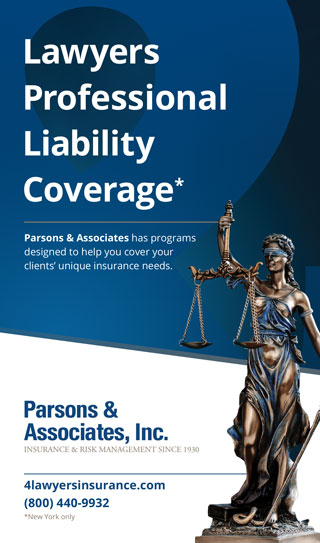In my completely biased opinion, the legal field has one of the best lexicons of any profession. Usurious, champerty, tortfeasor, and restrictive covenants are just a few of the myriad legal terms that all sound exceptionally legal and are almost completely opaque.
For many people, setting eyes on a term like restrictive covenants has the same effect as gazing into the eyes of Medusa. It doesn’t have to be that way—terms can’t really turn you to stone. However, they can be quite scary if not understood properly. With that in mind, let’s try to chip away at some of that overly legalistic language and cut to the heart of what a restrictive covenant is in hopes of more fully understanding what it is.
The jargon
Let’s first discuss some of the jargon. A restrictive employment covenant is an umbrella term that applies to any agreement between an employer, and a current or prospective employee.[1] It restricts the latter’s ability to engage in certain competitive activities during, and importantly, for a certain period, after employment.
The term restrictive covenant tells us some sort of activity is being curtailed; but to know which activity is being restricted, you need to know with which type of restrictive covenant you are dealing. There are three basic types of restrictive covenants: noncompetition, nonsolicitation of employees and customers, and nondisclosure/confidentiality. A single restrictive covenant could contain all three of these types of agreements, or it may only contain one or two types.
Nondisclosure
A nondisclosure/confidentiality agreement—colloquially an NDA—is a type of restrictive covenant that limits an employee’s ability to disclose certain information about a business. NDAs are used in many different business transactions such as mergers, acquisitions and the sale or licensing of products.
In the employment contexts, they most often are used when employees have access to confidential and proprietary information of a business, such as an agency’s client list. If that confidential and proprietary information was released, it would impact the business adversely. As such, an NDA would prohibit that employee from taking the information and selling it to the highest bidder; and if he or she did, the NDA would require the employee to pay damages to the employer.
Unlike the other restrictive covenants we will discuss, an NDA does not need to be limited in duration.
Nonsolicitation
An NDA prevents an employee from disclosing information to a third-party, but what would prevent the employee from just using that information? A nonsolicitation agreement would do this.
This type of a restrictive covenant limits an employee’s/prospective employee’s ability to solicit a business’s clients and/or employees. Some nonsolicitation agreements only address solicitation of clients and some only employees, and others address both clients and employees.
Unlike with nondisclosure agreements, nonsolicitation agreements must be limited in duration and scope. This means that the agreement only should encompass the information that a business has a legitimate interest and need to protect. Adding everything and the kitchen sink could get the agreement nullified in court. Similarly, the duration of the nonsolicitation agreement should be reasonable.
Whether a nonsoliciation agreement is reasonable usually is decided in a court of law. A court’s determination of the reasonableness of the duration and scope of a nonsolicitation is fact specific. The shorter the duration and the more specific the scope of the agreement, the more enforceable it will be.
Noncompete
A noncompetition agreement—most often referred to as a noncompete agreement—is the most notable and complicated of the restrictive covenants. Related, noncompete agreements tend to be the most restrictive[2] of the restrictive covenants. Unlike the other agreements discussed in this article, which prevent an employee from taking or sharing information, a noncompete agreement restricts an employee’s ability to work and compete against his or her former employer for a specific period of time, and in a specific geographic area. Due to their restrictive nature, there are several legal elements that a noncompete agreement must possess to be valid.
A noncompete agreement must be reasonably necessary to protect a legitimate business interest of the employer. The business interest that the agreement is needed to protect must be something along the lines of confidential customer lists, trade secrets, special processes or other information that gives its holder a business opportunity over others not privy to the information. Courts will not uphold agreements protecting interests that are easily discoverable or generally known. Basically, if you can find the information through a Google search, the protection will not apply.
A noncompete agreement also must be reasonable in time, geographic scope and scope of activity. Stop me if you have heard this one before, but a court’s determination of the reasonableness of the duration of a noncompete agreement is fact specific. Generally, the shorter the agreement, the more likely it will be enforceable. Over the years, case law has shrunk what is considered a reasonable duration for a noncompete agreement. While in the past, two years was considered a reasonable amount of time, today many courts are refusing to enforce noncompete agreements with durations longer than one year, and in some cases, six months.
A court’s determination of the reasonableness of the geographic scope of a noncompete agreement also is fact specific. In fact, there is often a correlation between the duration and geographic area. Frequently, courts refuse to limit an employee’s future employment outside of the immediate geographic area of his or her prior employment. However, in some cases a broader geographic restriction will be enforced if the duration of the agreement is shorter.
Finally, a noncompete agreement must be consistent with public policy. In practice, this means that an employer cannot restrict an employee’s ability to work if it would impact the public adversely. The best example of this is in the medical field. A handful of states have either prohibited or severely limited the use of noncompete agreements for doctors. The view is that this is against public policy because it limits consumers from going to the physicians they want. No offense, but this usually is not an issue in the insurance world, so there’s no more to be said about that.
New laws?
Traditionally, restrictive covenants and their elements have been created through the case law, referred to as the common law. However, legislation that would limit restrictive covenants recently has been introduced in a few state Legislatures around the country, including New Jersey and New York within the PIA Northeast footprint.
If passed, the legislation would add several more restrictions on noncompete agreements. A common element in many of the restrictive covenant legislations is the inclusion of a salary floor. If an employee makes below a certain figure, an employer would be prohibited from executing a noncompete agreement with him or her. For example, in 2021, Illinois passed a law that prohibits the use of noncompete agreements for any employee who makes less than $75,000 a year.
Another fun addition that legislation has added to the restrictive-covenant discussion is the concept of garden leave. Garden leave has been in use in Europe for years, but it is beginning to gain popularity in the halls of state Legislatures in the United States. It acts as a modified noncompete agreement. Instead of limiting where and when an employee can work, garden-leave provisions prevent an employee from working for anyone, anywhere but in exchange, the employer is required to pay the employee his or her normal salary and benefits for the duration of the garden-leave period. The term arose from the idea that employees are literally being paid to tend their gardens instead of working for their employer’s competitors. Sounds fun.
With a better understanding of what restrictive covenants are—and the limitations that exist for both employers and employees—you can pick the agreement that is not only best suited for your agency, but it is a good fit for the risk and employee as well.
Now, let’s talk about champerty[3] …
This article originally appeared in the November 2021 issue of PIA Magazine.
[1] Here on out, collectively referred to as employee.
[2] The restrictivest?
[3] Another fun legal term. It is an illegal agreement in which a person with no previous interest in a lawsuit finances it with a view to sharing the disputed property if the suit succeeds.

Bradford J. Lachut, Esq.
Bradford J. Lachut, Esq., joined PIA as government affairs counsel for the Government & Industry Affairs Department in 2012 and then, after a four-month leave, he returned to the association in 2018 as director of government & industry affairs responsible for all legal, government relations and insurance industry liaison programs for the five state associations. Prior to PIA, Brad worked as an attorney for Steven J. Baum PC, in Amherst, and as an associate attorney for the law office of James Morris in Buffalo. He also spent time serving as senior manager of government affairs as the Buffalo Niagara Partnership, a chamber of commerce serving the Buffalo, N.Y., region, his hometown. He received his juris doctorate from Buffalo Law School and his Bachelor of Science degree in Government and Politics from Utica College, Utica, N.Y. Brad is an active Mason and Shriner.






